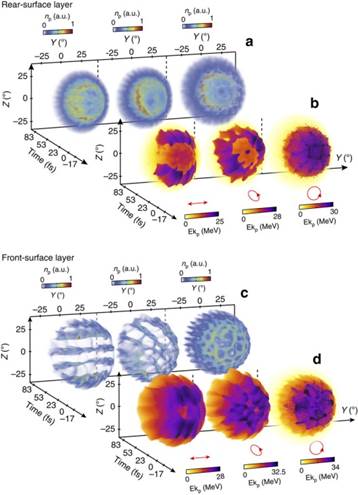Luca Stockhausen participates in study published in Nature Communications
Towards optical polarization control of laser-driven proton acceleration in foils undergoing relativistic transparency has been published in the Nature Communications, presenting results achieved by a team led by Prof Paul McKenna of the University of Strathclyde.
Control of the collective response of plasma particles to intense laser light is intrinsic to relativistic optics, the development of compact laser-driven particle and radiation sources, as well as investigations of some laboratory astrophysics phenomena. The authors recently demonstrated that a relativistic plasma aperture produced in an ultra-thin foil at the focus of intense laser radiation can induce diffraction, enabling polarization-based control of the collective motion of plasma electrons. In this paper they show that under these conditions the electron dynamics are mapped into the beam of protons accelerated via strong charge-separation-induced electrostatic fields. It is demonstrated experimentally and numerically via 3D particle-in-cell simulations that the degree of ellipticity of the laser polarization strongly influences the spatial-intensity distribution of the beam of multi-MeV protons. The influence on both sheath-accelerated and radiation pressure-accelerated protons is investigated. This approach opens up a potential new route to control laser-driven ion sources.

A comparison of spatial-density and kinetic energy distributions as a function of proton origin, with single-source layers.
Full article:
'Towards optical polarization control of laser-driven proton acceleration in foils undergoing relativistic transparency', Bruno Gonzalez-Izquierdo, Martin King, Ross J. Gray, Robbie Wilson, Rachel J. Dance, Haydn Powell, David A. Maclellan, John McCreadie, Nicholas M.H. Butler, Steve Hawkes, James S. Green, Chris D. Murphy, Luca C. Stockhausen, David C. Carroll, Nicola Booth, Graeme G. Scott, Marco Borghesi, David Neely & Paul McKenna, Nature Communications 7, Article number: 12891 (2016). doi:10.1038/ncomms12891